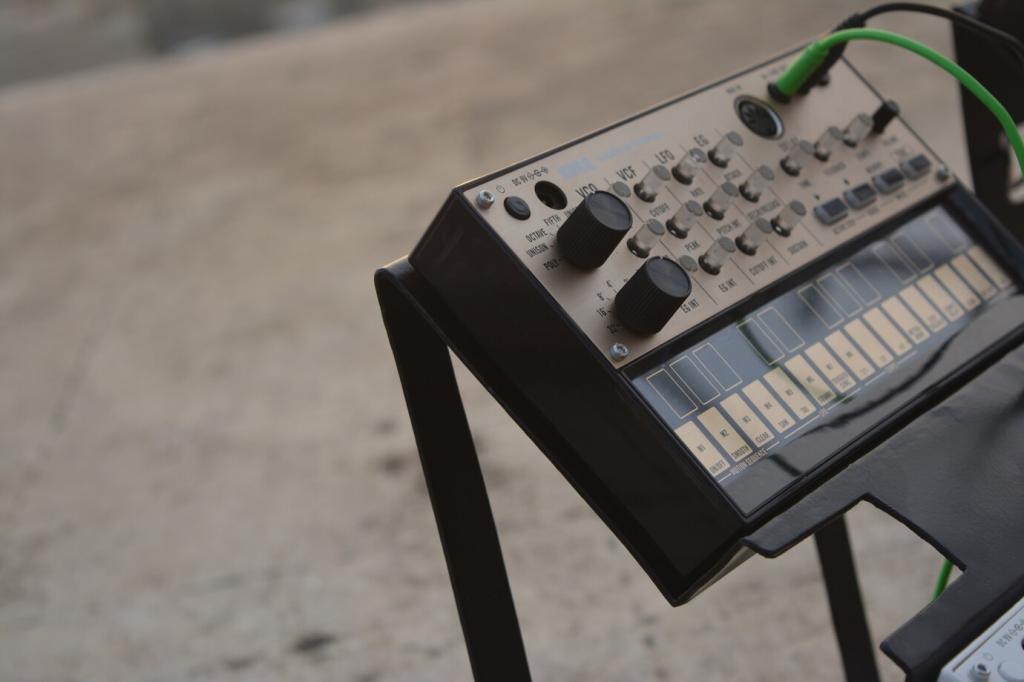
Comparative Reviews of Popular Home Gym Gear
Discover how the most sought-after home gym equipment stacks up against each other. In this comprehensive guide, we delve into the features, benefits, and drawbacks of notable home workout gear, helping you make informed decisions for your personal fitness space. Whether you’re a seasoned athlete or just gearing up, these comparative reviews shed light on which products truly deliver results.
Strength Training Essentials
01
Adjustable Dumbbells
Adjustable dumbbells have revolutionized home strength training by providing multiple weight options in a single compact set. Comparing leading models, such as Bowflex SelectTech and PowerBlock, reveals differences in weight increments, grip comfort, and transition speed. While some models offer swift and seamless adjustments, others may require more patience but boast greater durability. Assessing the mechanisms, size, and balance of each can help users determine which adjustable dumbbells best fit their exercise routines and space limitations, ensuring a smart investment for consistent progress without clutter.
02
Kettlebells
Kettlebells bring a dynamic edge to home workouts, supporting both strength and cardio conditioning. Popular brands like Rogue, Onnit, and CAP present kettlebells with varied materials, finishes, and handle thicknesses. The feel in the hand, the protective coating, and overall balance all influence the workout experience. Some users prioritize powder coatings for grip, while others value flat-bottom designs for stability. Comparing these attributes unveils how different kettlebells cater to varying hand sizes, training styles, and budgets, enabling users to select the most versatile and comfortable option for swings, snatches, and lifts.
03
Resistance Bands
Resistance bands are celebrated for their versatility, portability, and affordability. Comparing brands like Fit Simplify, Serious Steel, and TheraBand uncovers distinctions in stretch resistance, durability, and material comfort. Some bands offer progressive resistance for an adaptable challenge, while others focus on rehab and flexibility training. The quality of handles, included accessories, and length flexibility further sets them apart. Evaluating these differences helps fitness enthusiasts identify which set is best suited for their strength-building, stretching, or mobility-focused routines, maximizing their investment for home use.

Treadmills
Treadmills are a cornerstone for at-home running, and leading brands like NordicTrack, ProForm, and Sole offer innovative models with distinct features. Motor power, deck cushioning, incline range, and interactive programming differentiate each, affecting comfort, motivation, and overall user satisfaction. Some units fold easily for storage, while others provide immersive touchscreens for virtual classes and scenic routes. By weighing these components, prospective buyers can pinpoint which treadmill aligns best with their running style, training plans, and available home space, ensuring a rewarding cardio experience.

Rowing Machines
Rowing machines have gained traction for their full-body, low-impact approach to cardiovascular training. Comparing models from Concept2, Hydrow, and WaterRower reveals contrasts in resistance types—air, magnetic, or water—each bringing a distinct feel and sound profile. Interactive features, build quality, and storage possibilities also factor into the decision. Some prioritize detailed performance tracking, while others focus on realistic rowing sensations or silent operation. Evaluating these machines equips users with knowledge to select the most engaging rower for targeted endurance and muscle tone.

Stationary Bikes
Stationary bikes offer a convenient alternative to outdoor cycling and vary widely in design and features. Top contenders like Peloton, Schwinn IC4, and Echelon Connect range from high-tech interactive rides to classic spin formats. Console features, resistance mechanisms, adjustability, and included classes influence user experience. While some bikes boast robust communities and live streaming, others cater to those seeking quiet operation or customizable programming. By examining these aspects, users can determine which stationary bike fits their fitness ambitions and lifestyle needs.
Multi-Function Home Gym Systems
All-in-One Machines
All-in-one gym machines, like the Bowflex Xtreme and Total Gym FIT, offer comprehensive workout options in a single station. These systems differ in their approach—some use plate stacks, others leverage bodyweight or rods for resistance. Key distinctions include the range of exercises, footprint, and the smoothness of transitions between movements. Some units are geared towards beginners, offering guided routines and safety features, while more advanced models cater to heavy lifters. Assessing how these machines meet individual training demands and adaptation capacity helps shoppers select the ultimate home workout hub.
Functional Trainers
Functional trainers, such as the Inspire Fitness FT2 and Body-Solid GDCC200, emphasize versatility and natural movement patterns. These cable-based systems allow for countless exercise variations, targeting multiple muscle groups with adjustable pulleys and accessories. Differences arise in pulley adjustability, range of motion, included attachments, and construction quality. Certain trainers offer integrated weight stacks for seamless resistance changes, while modular options expand exercise possibilities. Scrutinizing these features ensures users choose a functional trainer that supports evolving routines, varied intensity levels, and long-term durability.
Compact Home Gyms
Space-saving home gyms, like the Marcy MWM-988 and Weider Ultimate Body Works, appeal to those with limited room but big ambitions. These compact systems integrate multiple workout stations into a condensed frame, prioritizing efficiency without significant compromise on exercise variety. Analyzing their build quality, assembly complexity, resistance range, and user weight capacity is essential for lasting satisfaction. While some prioritize foldability and lightweight design, others stand out for reinforced frames and broader exercise menus. Understanding these distinctions allows users to maximize workout potential within any home environment.
